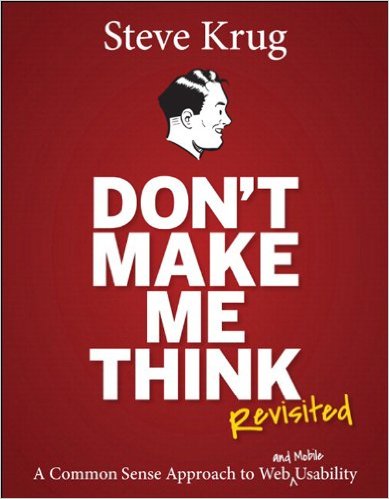
I was predisposed in favor of this book because it's the most-voted-for on the UX Stack Exchange. Thus far, I'd say our old bookahs are still more usable than anything digital… or aren’t they? :) This recent republication also includes a chapter on designing for mobile and accessibility.Ī very enjoyable, casual (and oftentimes fun) read, that the staff at Goodreads should consider rereading from time to time: a word to the wise is enough! Krug insists on the importance of usability testing: one chapter is actually a cookbook on how to conduct user tests without getting top-heavy on the matter. This short and highly readable book covers topics such as: how people really use websites (they don’t actually read, they like to scan and browse mindlessly… but we already knew that, didn’t we?), how to design navigation and breadcrumbs, etc. Both Krug and Nielsen have since become (along with Steve Jobs and Jony Ives, at Apple) the head honchos of Web Design. It was originally published in the early 2000’s, shortly after Jakob Nielsen’s Designing Web Usability. I read this handbook on Web usability for work related reasons. Rarely do I say a book has opened my eyes, but I think I'll make an exception with this one. Managers should read it (on one of their first-class trans-atlantic trips), designers should read it and keep the golden rules to heart before they put pen to paper (or stylus to tablet) and programmers/developers should read it to understand the technical requirements of implementing usability.

Who would I recommend the book to? Anybody with a stake in web projects. Steve presents a framework for running these sessions that elimates all excuses for usability testing to be included in a project lifecycle. Having led a relatively sheltered web life, with most of my work either focusing on small scale projects or internal projects, the concept of usability testing presented as a lightweight process that can be repeated at minimal cost over and over again had not occured to me. He uses a adequate number of examples to illustrate his points, and even helps to demonstrate how various stakeholders in web projects can all contribute to the usability of the site.įor me, the most interesting idea was of usability testing.


Steve's chapters are logical and concise, you won't find any waffle in here that doesn't help to communicate the message of the chapter. When it comes to the content itself, it couldn't be explained clearer. Add to that the short size of the book at only a couple of hundred pages, and the vibrant but clear layout and you've got a book that's in itself extremely usable and accessible. He holds a light writing style with a touch of wit that helps to keep your attention from cover to cover. I picked this up the day after finishing Beautiful Code and to be honest, really wasn't in the mood for any more particularly heavy content for a few days.īut Steve Krug makes the topic of web usability genuinely entertaing.


 0 kommentar(er)
0 kommentar(er)
